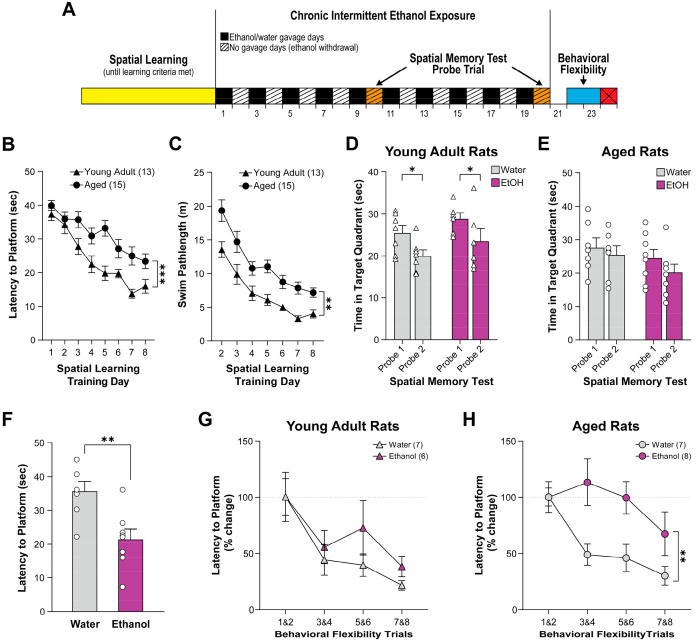Figure 1.
(A) Timeline of the behavioral experimental procedures. Rats were sacrificed on Day 24. The spatial learning performances of young adult rats during training were better than aged rats as they demonstrated reduced latency (B) and shorter swim path length (C) to reach the platform (***page < 0.001). Spatial memory did not significantly differ between ethanol- and water-treated groups on the fifth (probe 1) and tenth (probe 2) no-gavage days in both young adult rats (D) and aged rats (E). Young adult rats improved in probe 2 as they showed significantly reduced time spent in the target quadrant in probe 2 compared to probe 1 (D; *pprobe = 0.013), but only a trended reduction was found in aged rats (E). In aged rats, the latency to the platform was lower in ethanol-treated rats than water-treated rats overall in the first two behavioral flexibility training sessions (F; **p = 0.004). Young adult rats improved dramatically (i.e., reduced latency to platform) across behavioral flexibility testing sessions without treatment group difference (G; ptrial = 0.002). Aged rats treated with water showed very similar behavioral flexibility improvement as young rats, but those treated with ethanol did not show improvement until the last two testing sessions (H; **ptreatment = 0.009, ptrial = 0.008). Graphs are plotted in means with standard error of mean as error bars.

